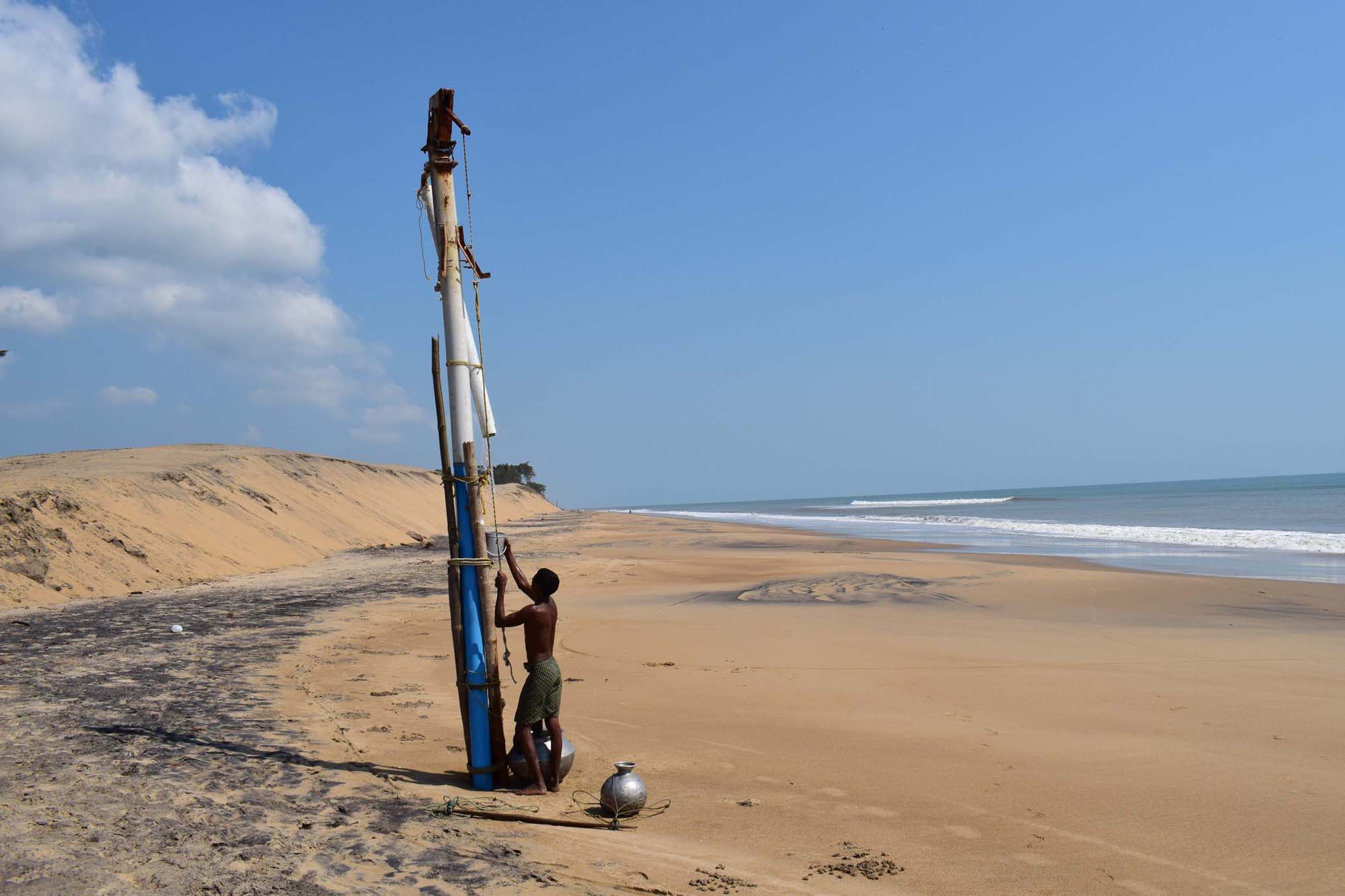Samikhsya Bureau
Odisha needs to prepare a concrete policy for dealing with the climate induced displacements as about one-third of Odisha’s coastline is already vulnerable to sea ingress triggered by climate change, says Water Initiatives Odisha, a non-profit working on water issues.
In a letter to Odisha chief minister Naveen Patnaik on Monday, water activist and WIO convenor Ranjan Panda said that people of Satabhaya gram panchayat area under Rajnagar block of Kendrapara district had been displaced because five villages were submerged in the Bay of Bengal due to sea erosion over decades. The displaced people have been shifted to a rehabilitation colony at Bagapatia, around 13 km away.
However, Panda said, people in many villages in the vulnerable coastline stretches were facing similar displacement and the state needed to prepare a concrete displacement, rehabilitation and resettlement policy for climate refugees. “The state’s efforts to protect remaining mangrove forests need to be further strengthened and a green corridor of mangrove and other locally suitable species need to be built along with some technological interventions to protect our eroding sea beaches,” Panda said.
In his letter, Panda has requested the chief minister to work out a proper rehabilitation package for the villager affected and displaced by sea erosion to ensure proper habitation, cropland and other compensations including right to access nearby forests for minor forest produces. “These villagers do understand the value of forest protection and right to forests would mean an increased involvement of the communities in forest protection,” he said.
Besides, he added, by the time a rehabilitation process is finalised, the people in the villages need to be provided with all basic amenities and livelihood support especially because their most of their farmlands are already inside sea and the remaining fields have become saline due to Cyclone Fani making it difficult for them to grow any crop for at least couple of years.
Panda also requested the chief minister to improve the rehabilitation package for Bagapatia inhabitants by speeding up the provision of basic amenities such as water supply, toilets, good roads and providing them croplands and grazing lands.
WIO has written the letter to the chief minister after extensive field visits to the affected areas in Kendrapara and Puri districts.
In March and May, researchers from WIO and journalists conducted studies in Udayanaki village under Astaranga block of Puri and found that people are suffering because of rapidly invading sea. “The invading sea has forced the villagers to relocate themselves thrice since the Super Cyclone in 1999,” Panda said.
After Super Cyclone, the villagers of Udayakani moved inwards to their farmland as their original village went into the sea. Then during Cyclone Phailin in 2014, they had to shift inland again after their settlement got sand cast. While they had been under tremendous stress after losing their homestead and farm lands, Cyclone Fani worsened their condition further by making their remaining land and water sources more saline.
The study by WIO found that villagers had built a drain along the sea to prevent the seepage of saline water to the village. But it failed to protect it from saline ingress during Cyclone Fani. The casuarina forest, which they had planted earlier to protect the village from saline ingress, has been destroyed by Cyclone Fani.
According to the villagers, in the last 50 years, the sea has marched 5 km inland and after 1999, the incursion has been faster. All the 30 individual tube-wells and two tube-wells set up by the government are oozing saline water and the villagers have no option but to consume that water and take bath in saline water. Most of the villagers are affected by hypertension and skin diseases due to constant consumption and use of saline water.
The saline water has caused damage to the livelihood of the villagers. Coconut farming was a major source of livelihood for them but severe salinity in the wind and water has hugely affected it. The WIO team also visited Tandahara village, adjacent to Udayakani and found similar situation there.
In June, WIO led a team of journalists and researchers to Bagapatia rehabilitation colony in Kendrapada where the state government has resettled the displaced people of Satabhaya gram panchayat area after their villages were engulfed by the sea. The team found that many challenges remained to be addressed in the colony.
The amount of support given for house building is too little considering the low lying swampy area where the people have been allotted homestead land. Roads are all kuccha and unsafe, there is no farmland, grazing land for the livestock and access to forests, which make it difficult for people to continue with their traditional livelihood options. “Youths from this area have already started migrating out of the state in search of jobs as their access to their remaining farm lands and fishery in the Satabhaya area is getting shrunk due to an ever encroaching sea and restrictions by the forest department,” Panda said.
(Pic by Priya Ranjan Sahu)



